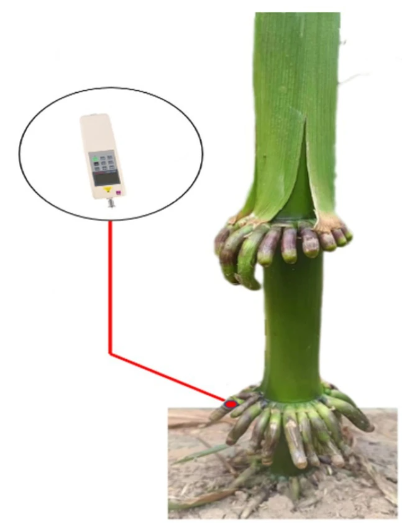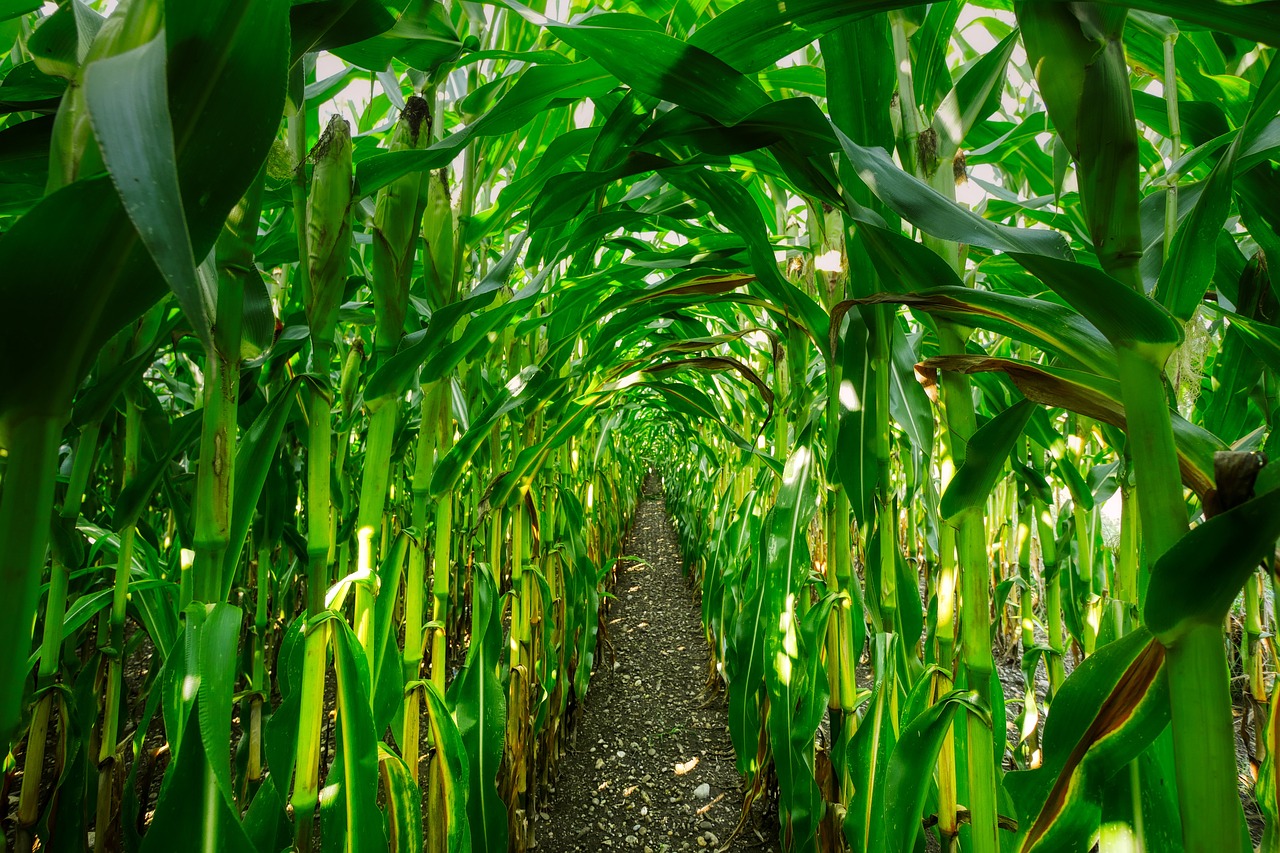Have You Ever Seen Prop Roots?Prop roots are a special type of root structure found mainly in grass family plants (Poaceae) and tropical plants. They are often prominently developed at the base of maize (corn) plants (see the figure below). These roots grow diagonally from the base of the plant into the soil, acting like pillars to support the plant. The development of prop roots enhances the plant’s ability to withstand environmental stresses such as strong winds and heavy rains. For large crops like maize and sugarcane, prop roots are particularly crucial—without them, the plants are at risk of lodging (falling over).

Additionally, prop roots spread close to the soil surface, allowing efficient absorption of water and nutrients from shallow soil layers. This makes them particularly useful in maintaining plant growth under harsh environmental conditions, such as drought or nutrient deficiency. The formation of prop roots is greatly influenced by the soil environment and weather conditions, demonstrating their flexibility as part of the plant’s survival strategy. Progress has been made in identifying the genes involved in the formation of prop roots, and here we introduce some of these findings.

The Discovery of Genes Related to Prop Roots and Their Roles
Recent studies have identified specific genes involved in the development of prop roots, garnering significant attention. These genes are key factors in regulating how prop roots are formed. Among the identified genes, some are involved in adjusting hormonal balances to promote root growth, while others regulate cell division and differentiation. This ensures that the prop roots develop sufficient thickness and strength to support the plant body.
One particularly noteworthy discovery is a gene that acts as a “formation switch” for prop roots. This gene enables plants to adjust prop root development in response to specific environmental conditions, such as soil hardness or wind intensity. Understanding this mechanism in detail provides valuable insights into how plants adapt to their environments.
Prop Roots: Applications and Potential in Agriculture
Research on prop roots holds great promise for improving agricultural practices. By utilizing the genes that control prop root development, it may be possible to create crops that are more resistant to lodging. For instance, in major cereal crops like maize and rice, strengthening prop roots could reduce damage caused by wind and heavy rains.
Furthermore, enhancing the nutrient and water absorption capabilities of prop roots could lead to crops that make more efficient use of these resources. This, in turn, could enable sustainable agriculture by reducing the need for irrigation and fertilizer while maintaining high yields. Such advancements would be particularly beneficial in arid regions and nutrient-poor soils.
The Future Impact of Prop Root Research
The study of prop roots not only deepens our understanding of plant physiology but also contributes to the advancement of agricultural technologies. Identifying and utilizing the genes that control prop root formation could pave the way for developing crops that are resilient to environmental changes. This progress brings us closer to addressing global challenges such as food security and climate change.
Prop roots go beyond merely providing physical support; they serve as a crucial clue to unraveling the complex relationship between plants and their environment. It will be exciting to see how future agriculture benefits from this research and its potential to revolutionize crop management and sustainability.



コメント